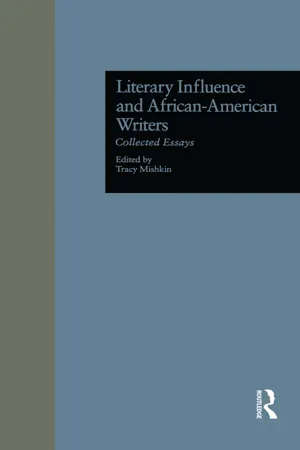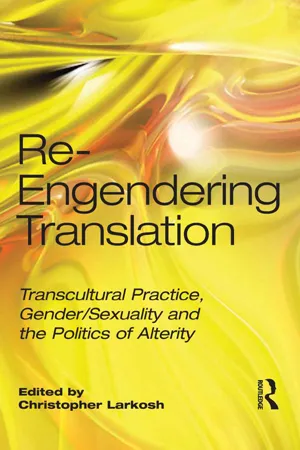History
Harlem Renaissance Literature
The Harlem Renaissance was a cultural, social, and artistic explosion that took place in Harlem, New York, during the 1920s. It was a time when African American literature, art, and music flourished, and it played a significant role in shaping the cultural identity of African Americans. Writers such as Langston Hughes, Zora Neale Hurston, and Claude McKay produced influential works that reflected the experiences and struggles of African Americans.
Written by Perlego with AI-assistance
Related key terms
5 Key excerpts on "Harlem Renaissance Literature"
- eBook - ePub
- Amy Helene Kirschke(Author)
- 2014(Publication Date)
- University Press of Mississippi(Publisher)
So, what was the Harlem Renaissance? The simple answer is that the Harlem Renaissance (or the New Negro movement, or whatever name is preferred) was the most important event in twentieth-century African American intellectual and cultural life. While best known for its literature, it touched every aspect of African American literary and artistic creativity from the end of World War I through the Great Depression. Literature, critical writing, music, theater, musical theater, and the visual arts were transformed by this movement; it also affected politics, social development, and almost every aspect of the African American experience from the mid-1920s through the mid-1930s.But there was also something ephemeral about the Harlem Renaissance, something vague and hard to define. The Harlem Renaissance, then, was an African American literary and artistic movement anchored in Harlem, but drawing from, extending to, and influencing African American communities across the country and beyond. We date it roughly from the end of the First World War through the Great Depression, but its roots extend well before the war and its legacy continued many years beyond the 1930s. It had no clearly defined beginning or end, but emerged out of the social and intellectual upheaval in the African American community that followed World War I, blossomed in the 1920s, and then faded away in the mid- to late 1930s and early 1940s.Likewise the Harlem Renaissance has no single defined ideological or stylistic standard that unified its participants and defined the movement. Instead, most participants in the movement resisted black or white efforts to define or narrowly categorize their art. For example, in 1926 a group of writers, spearheaded by writer Wallace Thurman and including Langston Hughes, Zora Neal Hurston, and artist Aaron Douglas, among others, produced their own literary magazine, Fire!! One purpose of this venture was the declaration of their intent to assume ownership of the literary Renaissance. In the process they turned their backs on Alain Locke and W. E. B. Du Bois and others who sought to channel black creativity into what they considered to be the proper aesthetic and political directions. Despite the efforts of Thurman and his young colleagues, Fire!! fizzled out after only one issue and the movement remained ill defined. In fact, this was its most distinguishing characteristic. There would be no common literary style or political ideology associated with the Harlem Renaissance. It was far more an identity than an ideology or a literary or artistic school. What united participants was their sense of taking part in a common endeavor and their commitment to giving artist expression to the African American experience. If there was a statement that defined the philosophy of the new literary movement it was Langston Hughes’s essay, “The Negro Artist and the Racial Mountain,” published in the Nation - D. Quentin Miller(Author)
- 2016(Publication Date)
- Routledge(Publisher)
4 The Era of the Harlem RenaissanceThe period known as the Harlem Renaissance (also called the “New Negro” Renaissance) is mostly associated with the 1920s, though its beginnings can be traced to the years just prior, and some of its spirit continued to exist in the years just after, until the Great Depression brought about a new set of issues that further changed the nature of African American literature. During the 1920s, an unprecedented amount of black writing was published and accepted by the white literary establishment, promising not only a better future for race relations, but, equally importantly, a new sense of black race pride. F. Scott Fitzgerald dubbed the 1920s “The Jazz Age,” and the development of that musical form is central to other African American cultural developments at the time. But although some of the architects and builders of the Renaissance wanted it to be seen as a purely artistic movement, it is evident that the literary tug-of-war of the Reconstruction era between sociopolitical thought and art-for-art’s-sake continued.The word “renaissance” connotes a rebirth, but it also refers to a focused period of extraordinary cultural production. The Harlem Renaissance fulfills both connotations: a new optimism replaced the mood of cultural uncertainty that characterized black America in the late nineteenth and early twentieth centuries, and it manifested itself in a spectacular artistic outburst. There is some debate about whether or not the Harlem Renaissance was a spontaneous outpouring of art or a socially and politically manufactured phenomenon: a conscious attempt to atone for the failures of Reconstruction. David Levering Lewis writes, “The Harlem Renaissance was a somewhat forced phenomenon, a cultural nationalism of the parlor, institutionally encouraged and directed by leaders of the national civil rights establishment for the paramount purpose of improving race relations in a time of extreme national backlash, caused in large part by economic gains won by Afro-Americans during the Great War” (xiii). Nathan Irvin Huggins begins his essential study of the movement with the observation, “It is a rare and intriguing moment when a people decide that they are the instruments of history-making and race-building” (3).- eBook - ePub
- Cherene Sherrard-Johnson(Author)
- 2015(Publication Date)
- Wiley-Blackwell(Publisher)
Introduction: Harlem as Shorthand: The Persistent Value of the Harlem Renaissance Cherene Sherrard-Johnson This Companion to the Harlem Renaissance provides a comprehensive guide to the literature and culture of a period of unprecedented artistic production in the African diasporic community of the United States. It includes cutting-edge work from eminent and emerging scholars about the genesis, aesthetics, genres, historical contexts, and lasting influence of the Harlem Renaissance on African American, African diasporic, and American literary traditions. Arising from the longer New Negro movement, which marked a transformative period in African American life and culture, the Harlem Renaissance, at its core, was an era of artistic activism most scholars agree began in the early twentieth century and waned prior to the Second World War. Harlem Renaissance studies are marked by vigorous debates about the relationship between race and art, history, gender, class, sexuality, politics, sociology, and philosophy. A Companion to the Harlem Renaissance unites diverse scholarship resulting from the collective study of this first, global, Black Arts Movement and its enduring influence. Building on the most innovative scholarship of the past century, this Companion helps cement the era as essential within American and African American literary and cultural studies. Broad in scope and comprehensive in coverage, the collection combines a thorough grounding in the primary texts and critical contexts of the Harlem Renaissance with the unique perspectives of scholars whose careers have been devoted to the study of this inter-artistic movement - eBook - ePub
Literary Influence and African-American Writers
Collected Essays
- Tracy Mishkin(Author)
- 2015(Publication Date)
- Routledge(Publisher)
African-American and Irish Literature
Passage contains an image
“About Us, For Us, Near Us”: The Irish and Harlem Renaissances
Brian Gallagher DOI: 10.4324/9781315861647-5The Harlem Renaissance of the 1920s, which lasted through the 1930s in a much diminished form, constituted the first widespread movement in African-American literary history. For the first time, Black writers, as well as painters, sculptors and musicians, had direct contact with dozens of their fellow artists. Harlem had become the acknowledged “cultural capital” of Black America, for, fed by ever-increasing numbers from the “Great Migration” of Blacks from rural South to urban North, New York City by 1920 had replaced Washington, D.C., as the largest Black urban center in the nation.In their attempt to comprehend and expand the role Harlem had in this cultural revolution, Black writers often looked beyond national boundaries for models, and one of the most commonly evoked was the Irish Renaissance.1 “Harlem has the same rôle to play for the New Negro as Dublin has had for the New Ireland…” wrote Alain Locke in the introduction to his landmark 1925 interpretative anthology, The New Negro (7). While it would be too much to claim that modern Irish writers had a strong influence on the writers of the Harlem Renaissance, it can be said that the paradigm of an oppressed people rising to literary greatness in one short generation did serve as a continuing inspiration and occasional guide for African-American writers in the 1920s. Moreover, the situation of the Irish writer around the turn of the century—with respect to language, heritage, and cultural institutions - eBook - ePub
Re-Engendering Translation
Transcultural Practice, Gender/Sexuality and the Politics of Alterity
- Christopher Larkosh(Author)
- 2014(Publication Date)
- Routledge(Publisher)
Indeed, the literate and cultured French well appreciated the talents of black writers, jazz musicians and visual artists who were not always acknowledged in their own land. 6 This crossing of national boundaries recalls Gilroy’s assumption (1993:15) that the black experience in the modern world has always been transnational and has generated “a politics of travel and voluntary relocation”: that is, a basic intimate desire to transcend both the structures of the nation-state and the constraints of ethnicity and national particularity. In addition to travelling experience, during the Harlem Renaissance African-American women also attempted to find release from the ever-present restrictions and from their worries about the gender and colour line through literary activities and social networking outside the limelight (McIntosh 1990:1). In particular, they were engaged in co-ordinating the organization of black women’s groups and holding or participating in salon groups. 7 Indeed, several women in the Harlem Renaissance sponsored literary salons attended by prominent members of the African-American community. Among them, columnist, educator, musician, playwright and poet Georgia Douglas Johnson (1886-1966) held the famous S Street Salon in her home in Washington, D.C. Johnson not only opened her home for salons but for writing workshops in which aspiring writers developed ideas and actual works. Those writers based in New York City often made it a point to visit the Johnson home when travelling through Washington or periodically visited the city specifically to attend the salon. Some of her guests included: Alain Locke, Jessie Fauset, Countee Cullen, Marita Bonner, Langston Hughes and May Miller
Learn about this page
Index pages curate the most relevant extracts from our library of academic textbooks. They’ve been created using an in-house natural language model (NLM), each adding context and meaning to key research topics.




